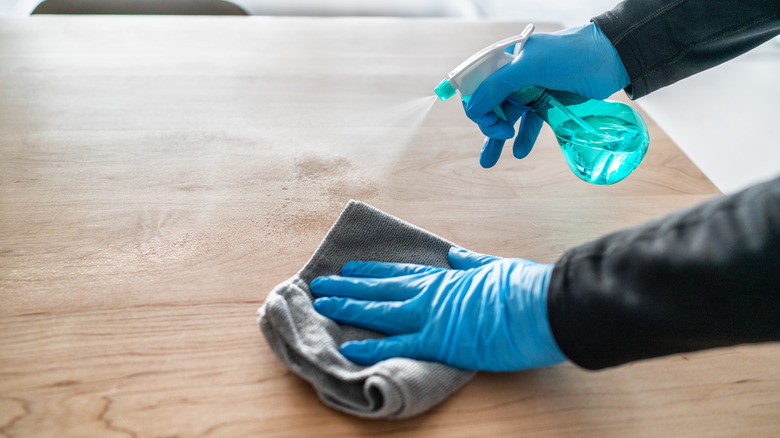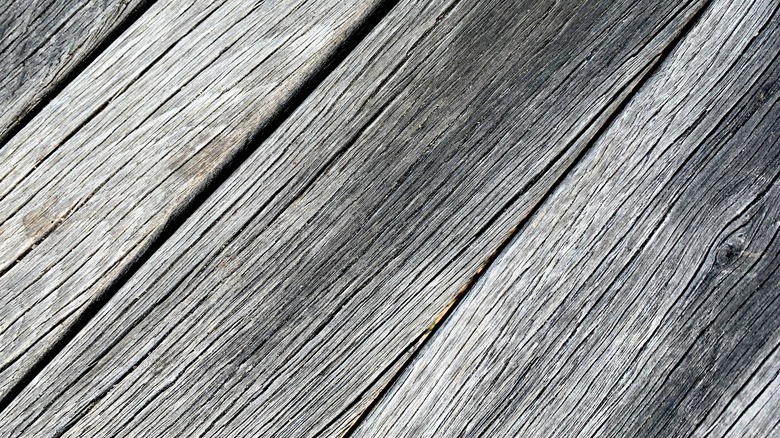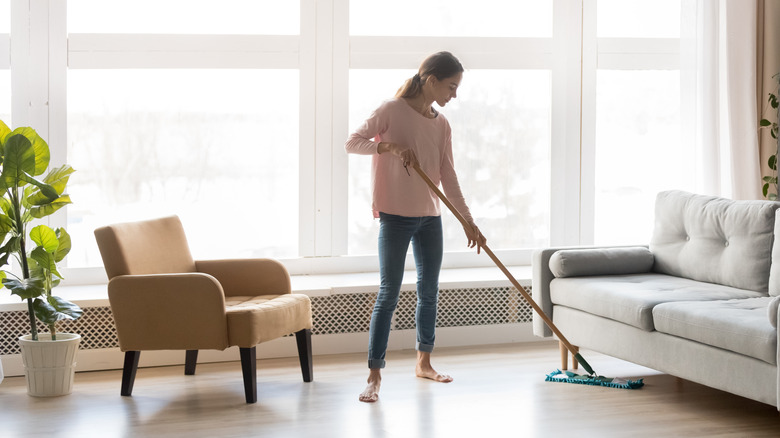Why You Should Think Twice Before Using Bleach To Clean Wood
We may receive a commission on purchases made from links.
For some jobs, bleach is the only solution. Thanks to its microbicidal properties, bleach's disinfectant powers are tried and true (via Brittanica). Bleach is best used to clean high-touch surfaces, particularly in bathrooms. Door knobs, toilet seats, trash can lids, sinks — it'll do the trick on most materials, even porcelain. However, you always want to make sure you dilute bleach with water (via Oprah Daily). Overall, there are many reasons to be grateful for bleach and its impressive power when doing a deep clean of the house. A little really does go a long way.
However, because of its strength, there are certain materials you'll want to avoid using bleach on and wood is one of them. Luckily, there are many wood-safe cleaners out there that'll give the result you're looking for without any of the harm. It's probably best to stow away the bleach in the laundry room and let it shine where it's meant to: stain removal and germ killing.
Bleach breaks down wood
We've established that bleach is powerful — so powerful you can't use it to clean wood surfaces or floors. Wood is porous, meaning it'll absorb moisture. Knowing that, if you pour a bleach solution onto your wood, it'll seep in and end up warping the wood as well as discoloring it (via Tom's Guide). We all know bleach is a lightener, so while it may disinfect your wood floors or coffee table, it'll wreak havoc on the material as well. Also, while bleach can effectively remove mold off some surfaces, it actually won't do this on wood.
If you're tempted to mix just a little bleach with your wood-safe cleaner, resist. Bleach doesn't mix well with other chemicals and ingredients (via The Maids). Other materials to avoid cleaning with bleach are toys, granite, your phone or computer screen, and of course, vegetables and fruits. Here's what you can use.
What to use instead
Instead of making mistakes with your hardwood floors, there are a lot of options when it comes to what you can safely use. From homemade solutions to bottle-ready all natural wood cleaners, it's fairly easy and affordable to keep your wood looking clean and shiny. According to Real Simple, your wood floors should only be deep-cleaned about once a month. A lot of the wood cleaners out there can actually leave a filmy residue on your floors — which vinegar will take care of.
One cup of distilled white vinegar to one gallon of water should do the trick. Make sure you've swept thoroughly beforehand and a microfiber mop is probably your best bet for really clearing the debris. If you're looking for something off the shelf, Bob Vila recommends Dr. Bronner's Sal Suds Biodegradable Cleaner or Howard Products ORS016 Orange Oil Wood Polish. The former is a plant-based cleaner that is tough on grime and the latter will give a nice oily shine to any wood needing a revamp — the ultimate dynamic duo.


